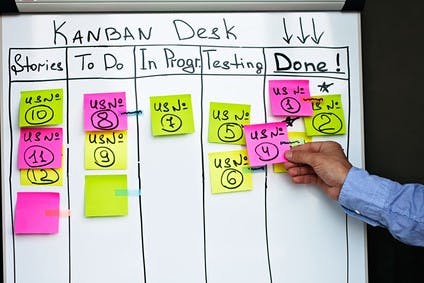Extra article on UI, I give here advice on the way to ensure that user interfaces have been correctly developed.
Like in the previous articles, I use a Scrum tool : the definition of done which is a contract established between the developer team and the product owner on the requirement level of developments. A feature which doesn’t respect these requirements can’t go in production.
The definition of done can evolve during the project lifetime, it starts in general from a minimal list to grow with the execution capacity of the team. Most of the time we will be satisfied with a minimal list rather than living with too many rules constraining the delivery in production. But I think that it’s important to go up in quality and then in requirement while the execution capacity of the team improves. That’s why I propose here different ladders of requirement.
Definition of done for the UI part
Base ladder:
The interface specifications are respected
- the screen layout is respected
- the dimensions (space and size) are respected
- the block colors are those specified
- the block shadows are those specified
- the interface components and their style are those specified
- the images are those specified
- the texts are those specified
- the fonts, font sizes, styles, colors, shadows used are those specified
- the main and secondary flows have been checked
The verification has been done on variations of the different possible configurations
- minimum and maximum supported screen sizes in dp (screen layout suited for small and large surfaces, see 1st part of the article)
- smartphone and tablet (to test specific layouts like multipane)
- minimum and maximum Android versions (compatibility of the interface components used)
- 2 screen densities, the 2 bigger smartphone and tablet densities : the most requiring in quality and with non proportional factors (to check the taking into account of the density in dimension calculations)
- supported languages
The verification has been done on at least one physical device
Choose a minimum device set combining the different configurations to simplify
Quality ladder :
Animations
- the animations have been developed
- the animations are those specified
The display is fluid on a mid-range device: constant 60 frames per second
The base accessibility criteria are respected
- adding of a description (contentDescription attribute) to interface components without displayed text
The graphic designer validates that the integration respects the specifications (good understanding, development compromises and business adjustments)
The base quality criteria defined for interface files are satisfied
- maximum depth of X for readability (to define)
- usage of style to regroup attributes
- interface behaviors described as possible in xml (rather than programmatically)
- etc.
Advanced quality ladder :
Interfaces are “Pixel Perfect”
The advanced accessibility criteria are respected
- rest of the official Android checklist (need of test with the TalkBack tool)
The verification has been done on the totality of the possible configurations
- all the supported Android versions have been tested
- all the densities have been tested
- risky constructor devices have been tested (to check anomaly due to non respect of the Android specifications, eg Samsung)
The advanced quality criteria defined for interface files are satisfied
- to define
This definition of done is a proposition. Feel free to adapt it to your team context.
Android Developer at jacquesgiraudel.com


